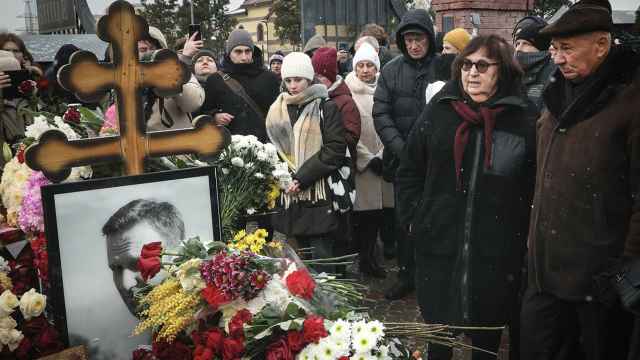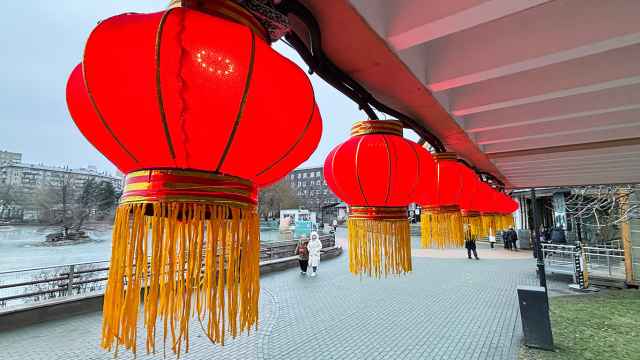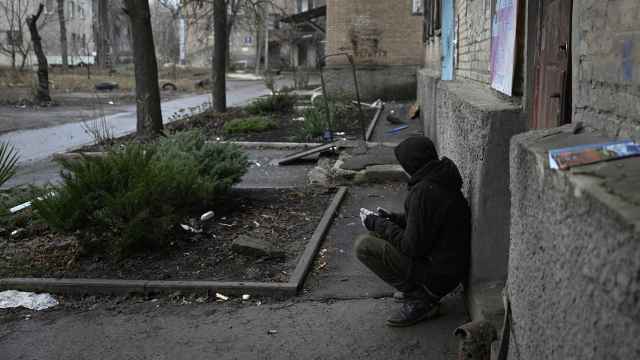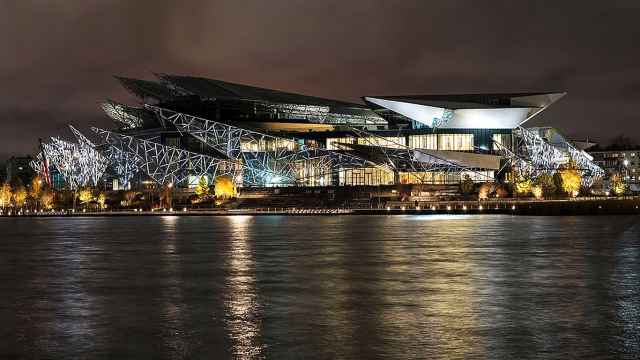In Photos: 20 Years After the Beslan School Siege
On the morning of Sept. 1, 2004 — the first day of the new school year in Russia — armed terrorists took more than 1,100 civilians hostage at School No. 1 in Beslan, a town in Russia’s North Caucasus republic of Ossetia.
The terrorists’ demands included the withdrawal of Russian troops from Chechnya and the recognition of Chechnya’s independence.
The hostages were forced inside the school’s gymnasium rigged with explosives and kept there without food, water or proper sanitation for three days. On Sept. 3, Russian special forces stormed the building after a series of explosions inside the school.
The siege ended with more than 330 civilians killed, 186 of whom were children, as well as more than 700 injured.
Today, the school's ruins stand as a memorial to the victims of the siege — the deadliest terror attack in Russian history.
The terrorists’ demands included the withdrawal of Russian troops from Chechnya and the recognition of Chechnya’s independence.
The hostages were forced inside the school’s gymnasium rigged with explosives and kept there without food, water or proper sanitation for three days. On Sept. 3, Russian special forces stormed the building after a series of explosions inside the school.
The siege ended with more than 330 civilians killed, 186 of whom were children, as well as more than 700 injured.
Today, the school's ruins stand as a memorial to the victims of the siege — the deadliest terror attack in Russian history.
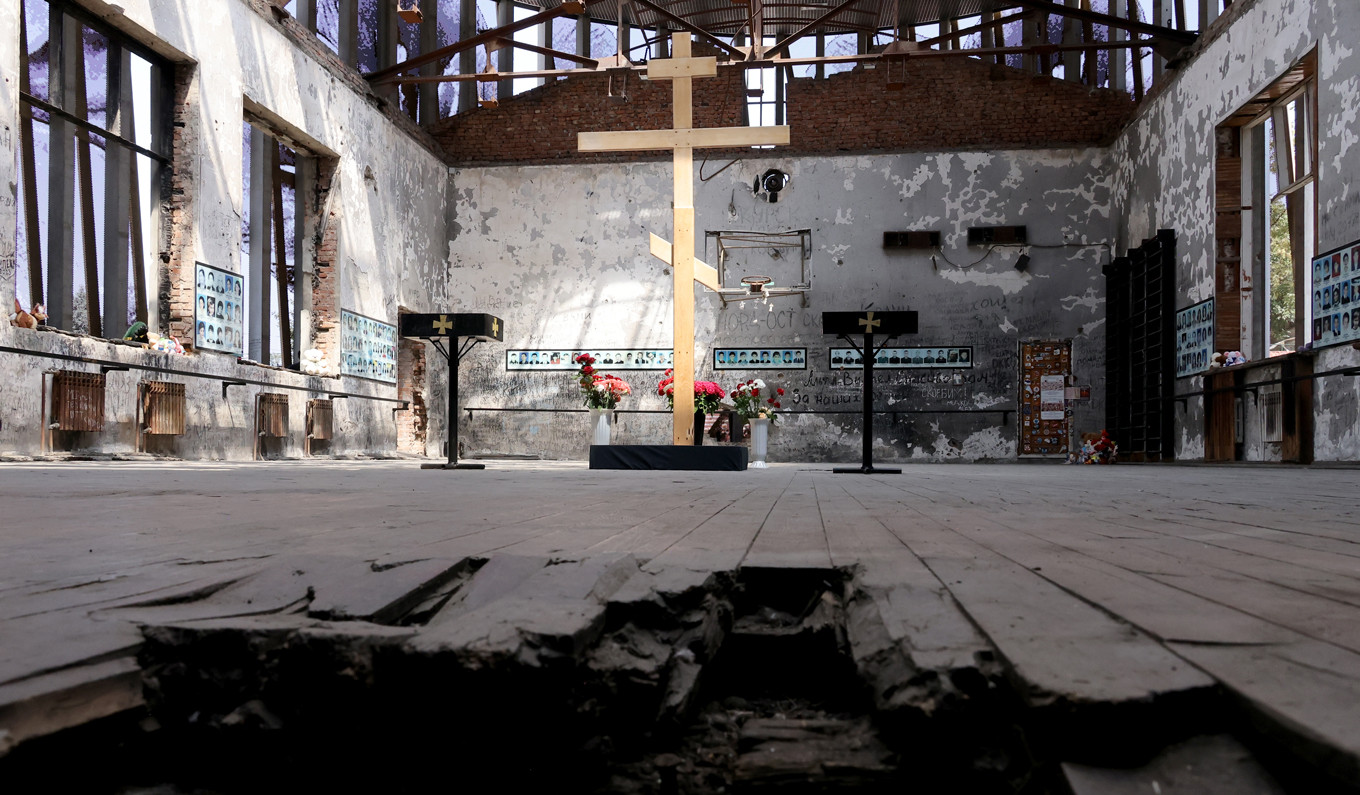
A view of the gymnasium of School No. 1, where more than 1,000 civilians were held hostage by the terrorists.
Sergei Karpukhin / TASS
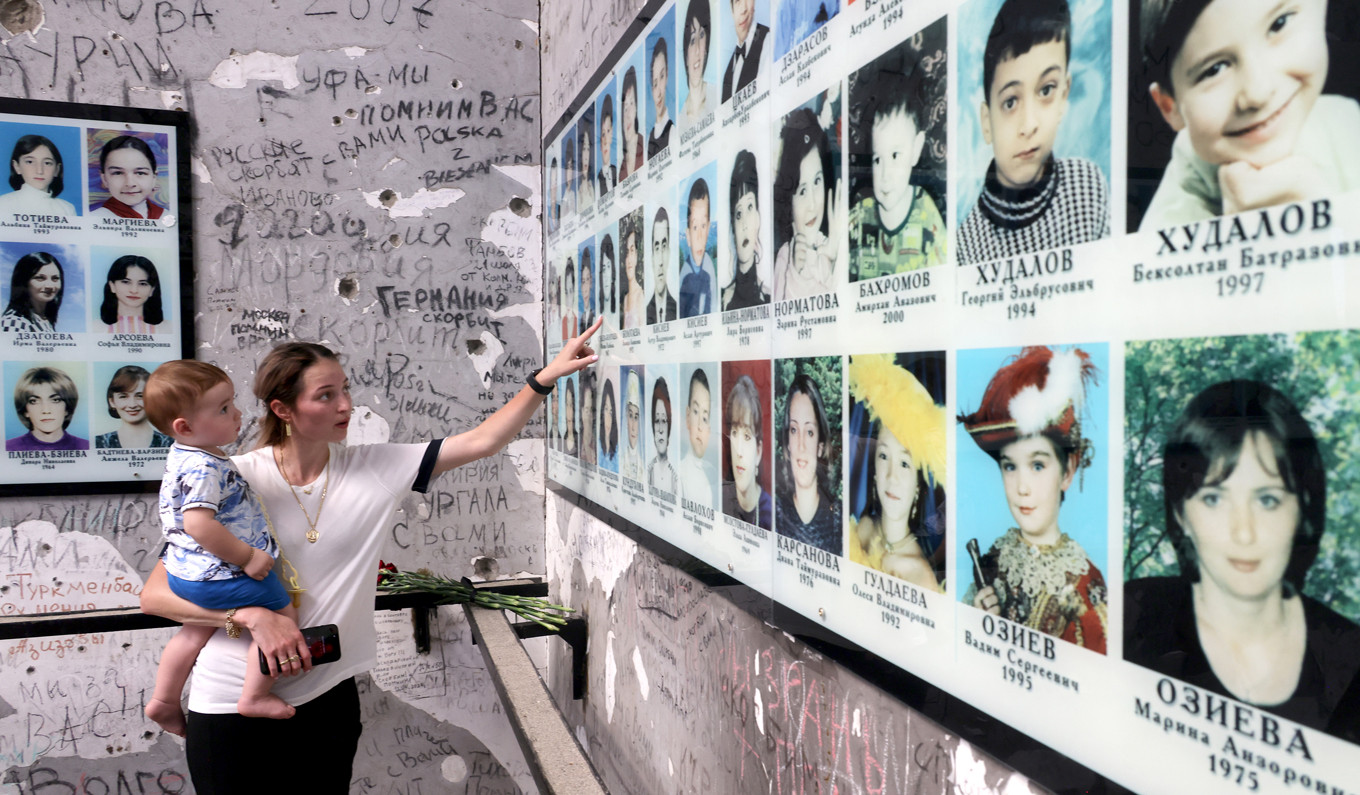
A woman holding a child looks at portraits of the victims hung on the walls of the gymnasium. The hostage crisis and the subsequent siege killed more than 300 and injured almost 700 civilians, the majority of whom were children.
Sergei Karpukhin / TASS
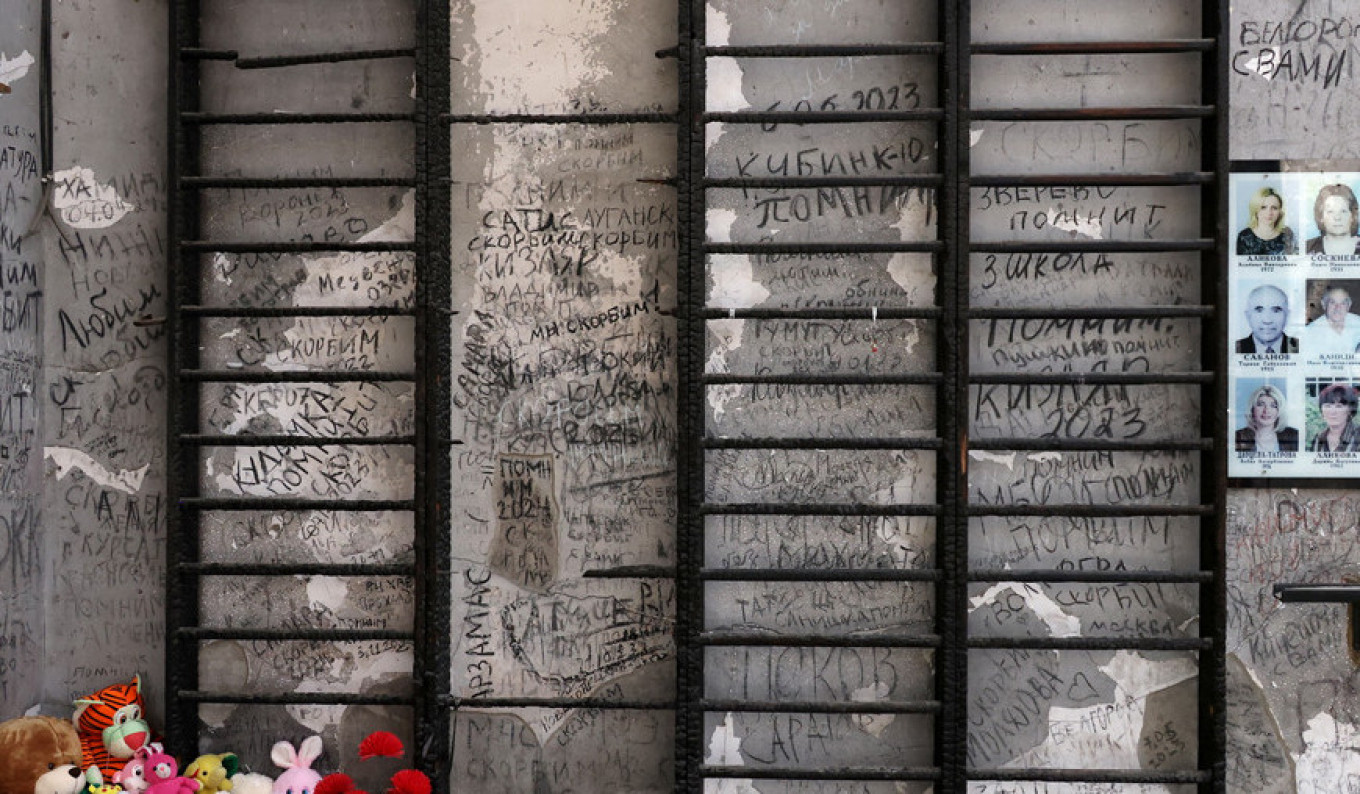
The gymnasium walls are covered with scribbled text left behind by locals and visitors who leave behind messages dedicated to the deceased.
Sergei Karpukhin / TASS
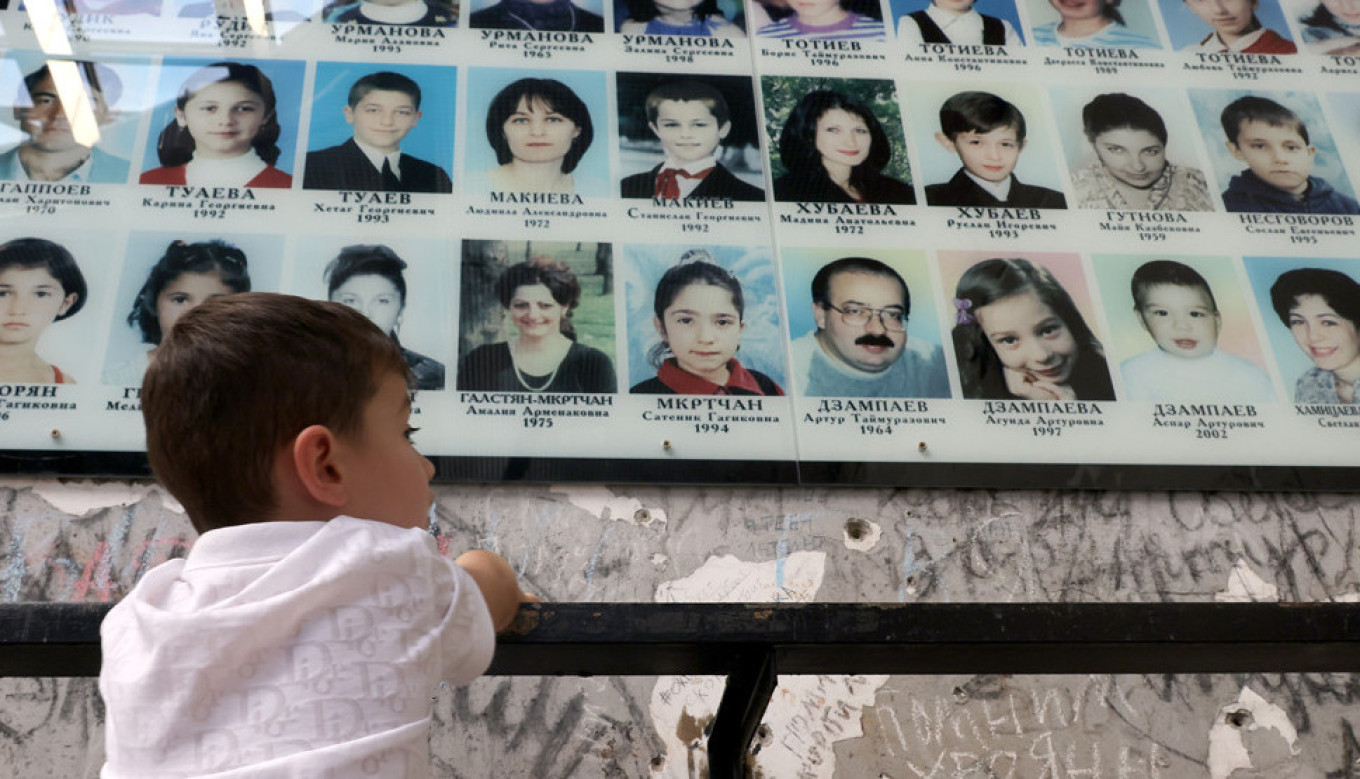
A child looks at photos of those killed in the hostage crisis and the subsequent siege.
Sergei Karpukhin / TASS
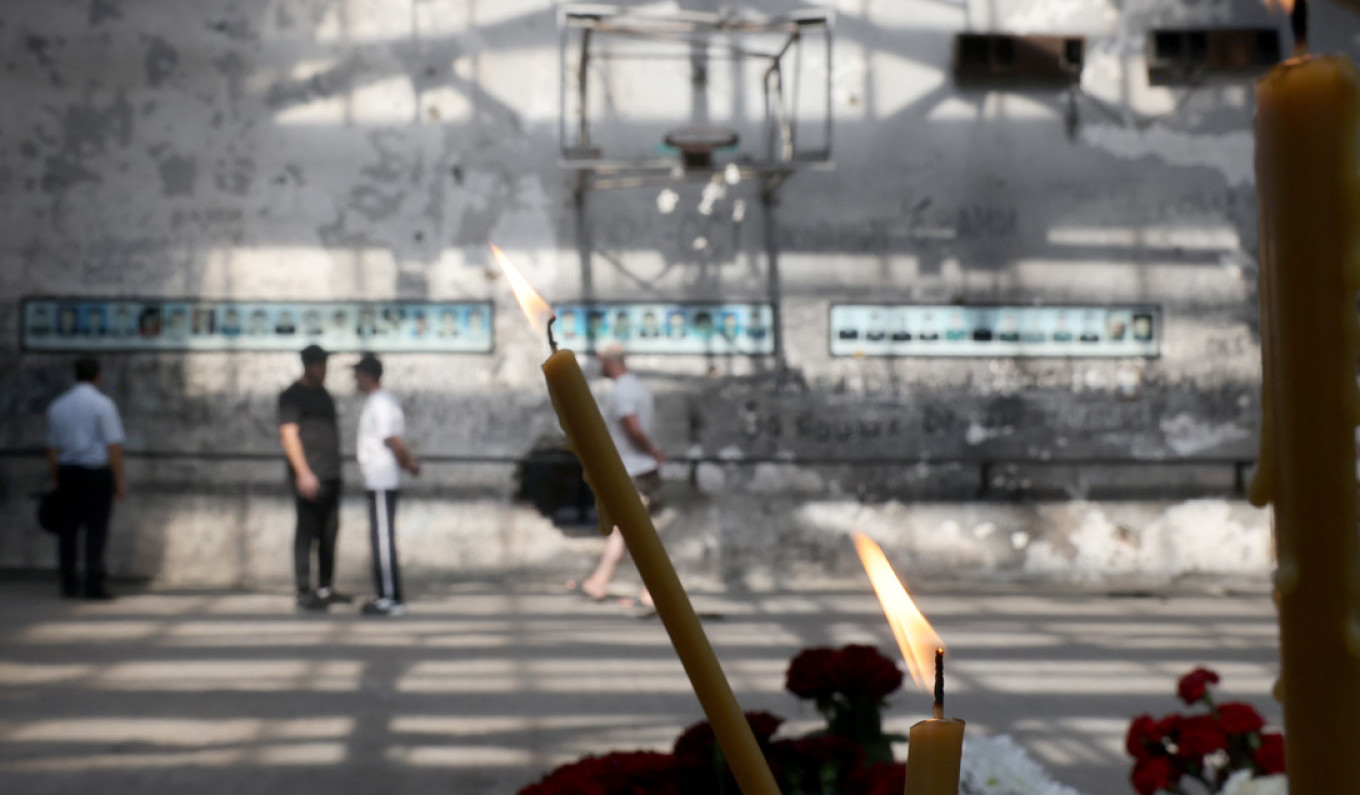
Candle flames sway on the memorial installed in the Beslan school’s gym.
Sergei Karpukhin / TASS
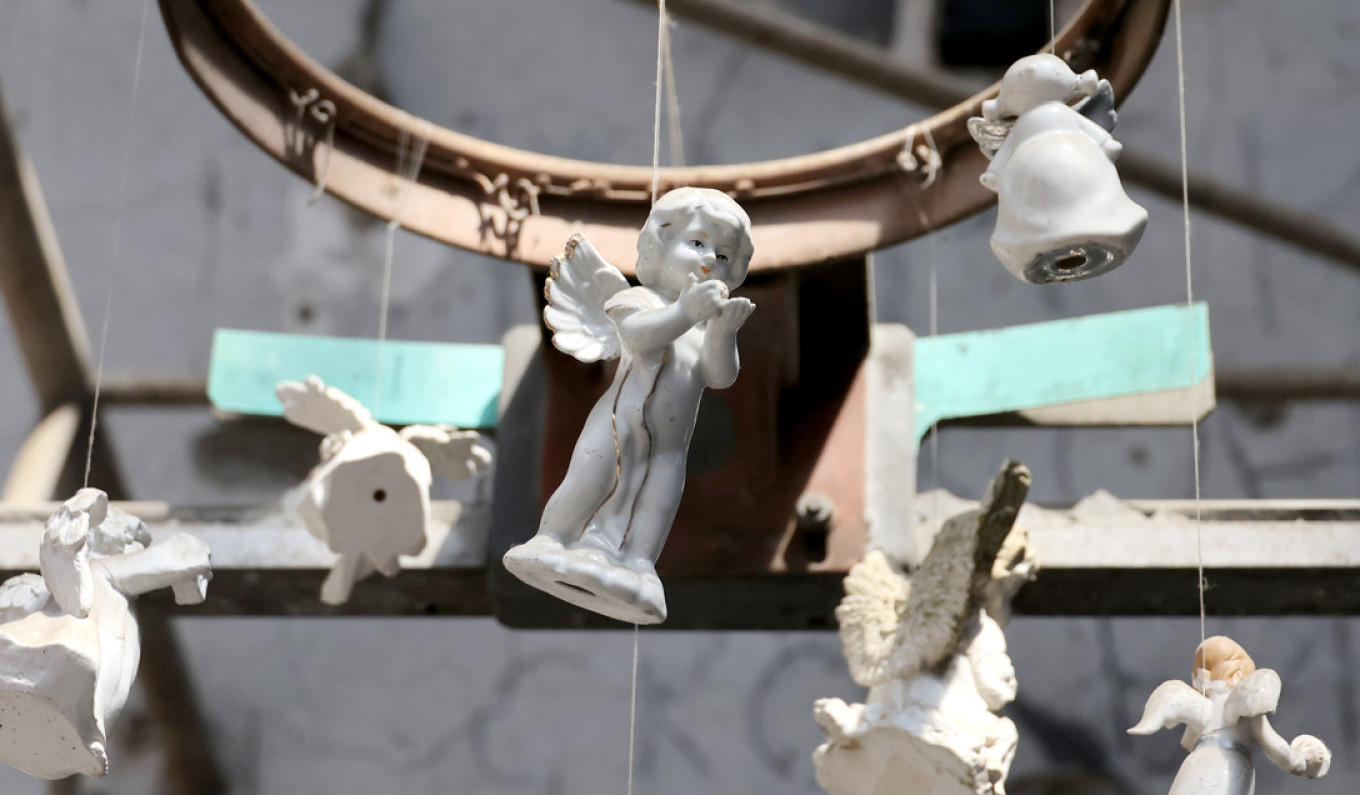
Angel figurines hang off of the basketball hoops in the school’s gym. Some hostages reported at the time that one of these basketball hoops became the catalyst for disaster when a bomb dislodged, detonating and igniting the chaos that led to the deadly crossfire on the third day of the siege.
Sergei Karpukhin / TASS
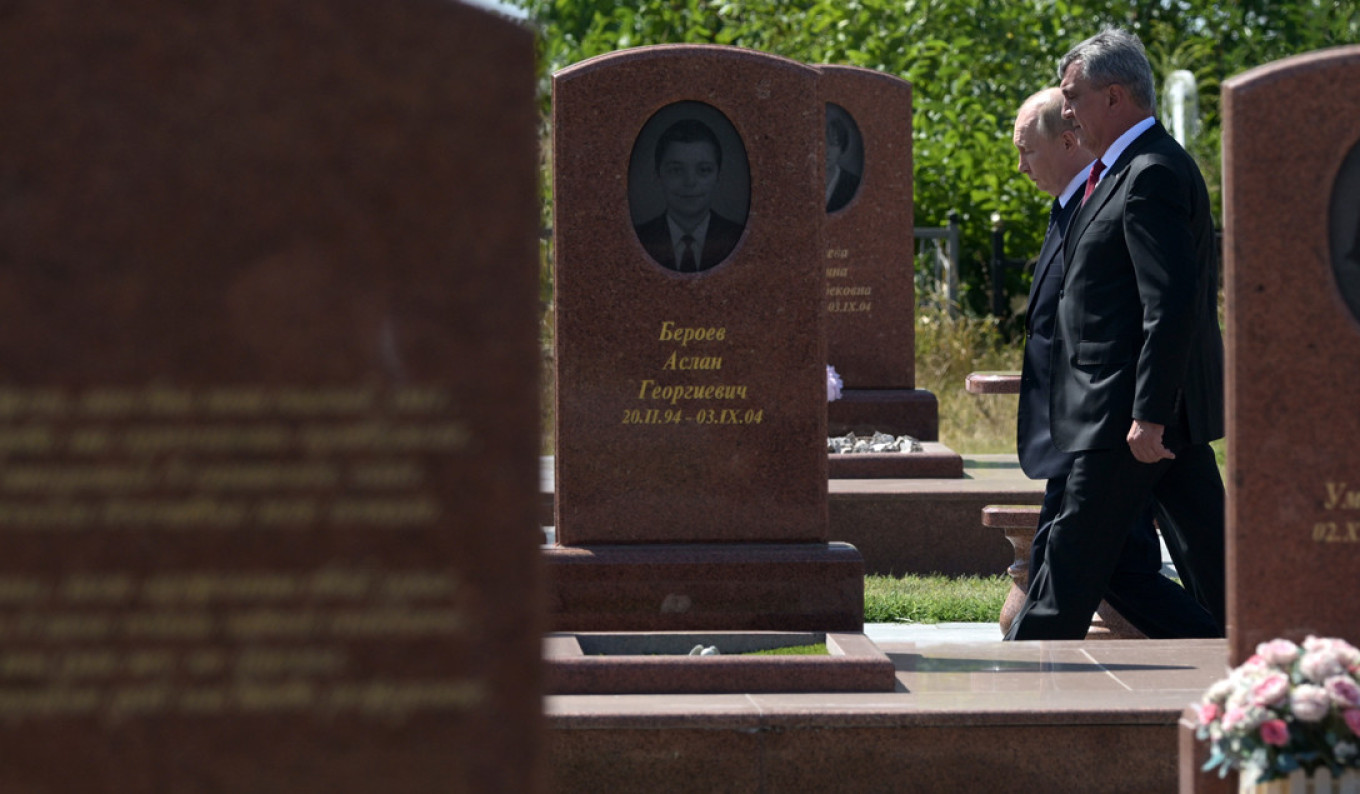
President Vladimir Putin visited Beslan ahead of the 20th anniversary of the tragedy, visiting School No. 1 itself for the first time since the siege.
Vladimir Astapkovich / POOL / TASS
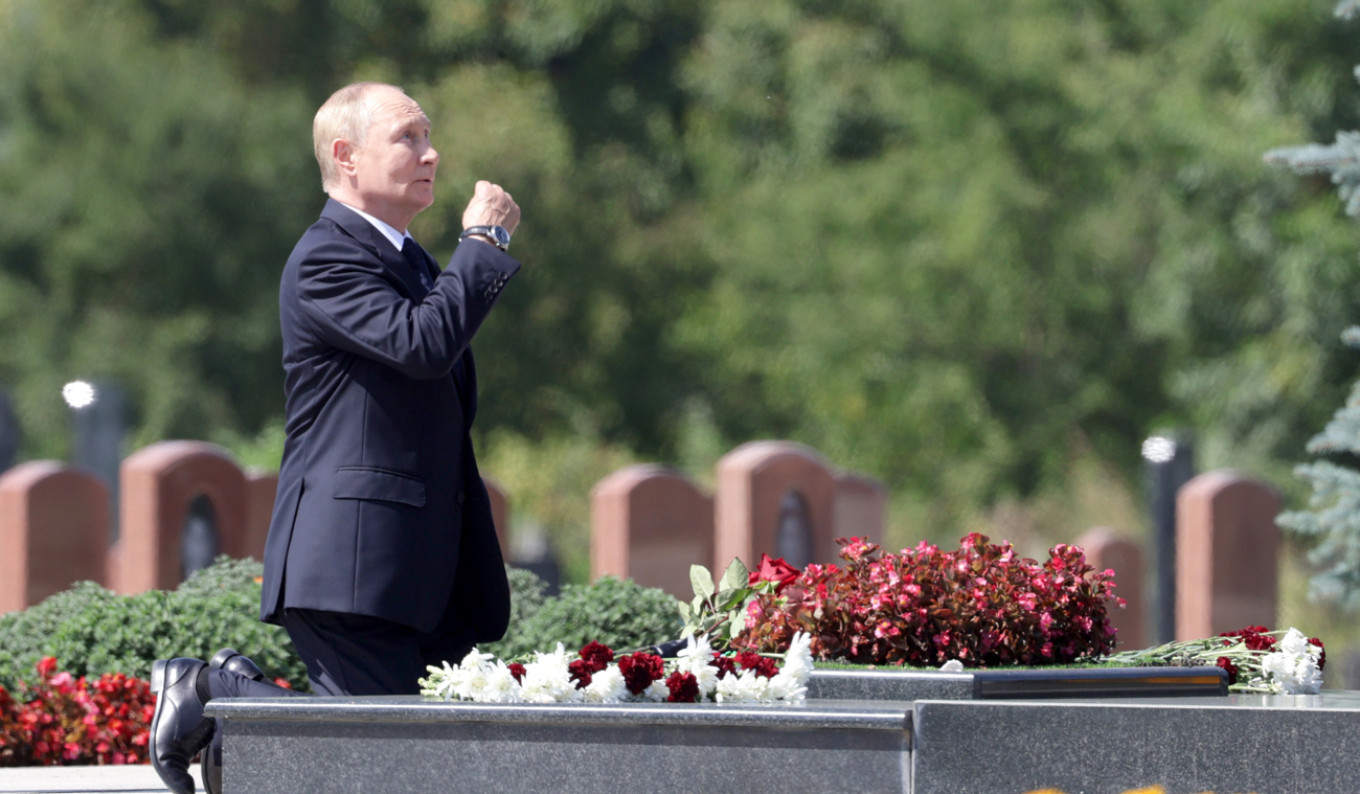
The Beslan tragedy paved the way for the Kremlin to consolidate power and prioritize the security state. It also led to widespread criticism of Russia’s handling of the crisis.
Gavriil Grigorov / TASS
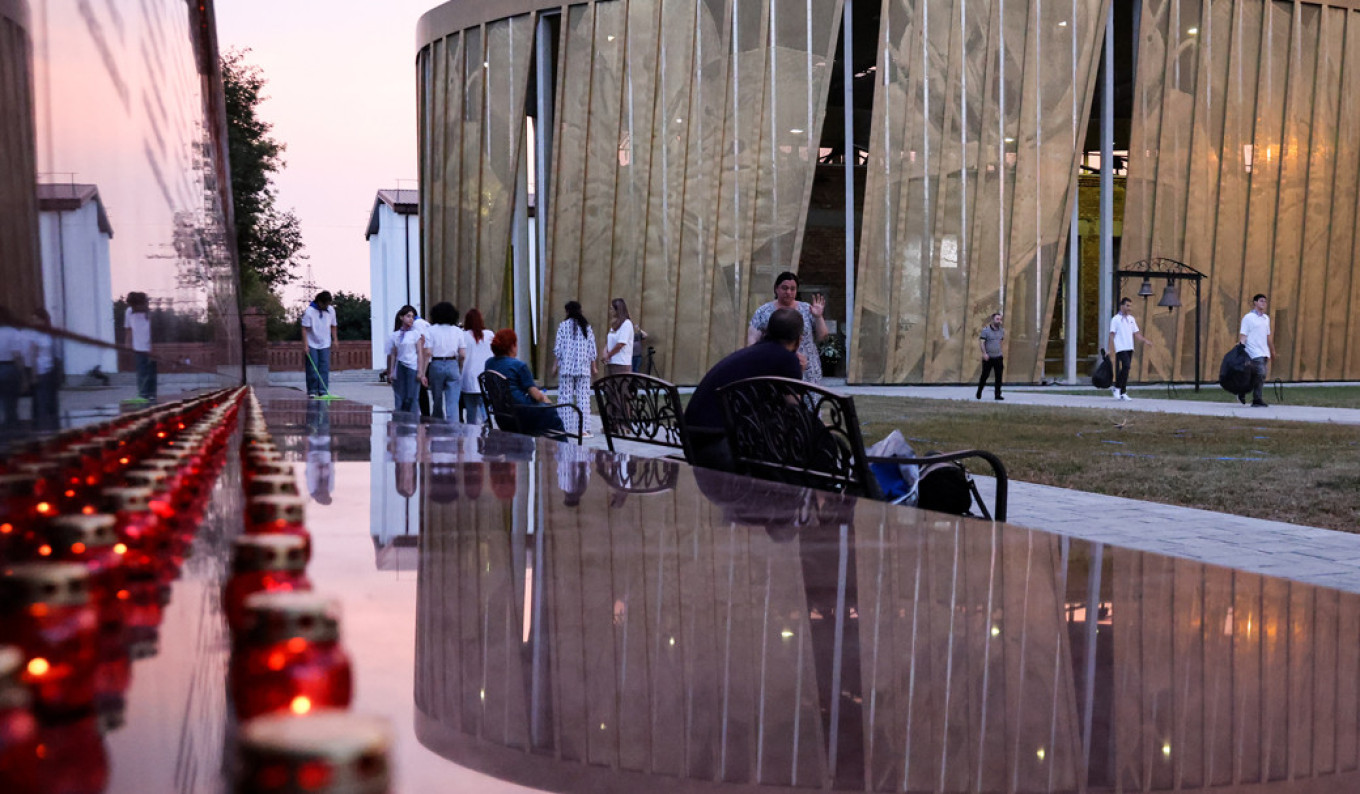
According to a 2017 European Court of Human Rights (ECHR) ruling, while the terrorists were firing on civilians amid the chaos following the explosions, Russian authorities also used grenade launchers and helicopter-launched missiles against the already devastated building.
The ECHR determined that Russian authorities failed to act on information about an impending terrorist attack and inadequately planned and executed the security operation, contributing to civilian casualties.
The ECHR determined that Russian authorities failed to act on information about an impending terrorist attack and inadequately planned and executed the security operation, contributing to civilian casualties.
Yelena Afonina / TASS


